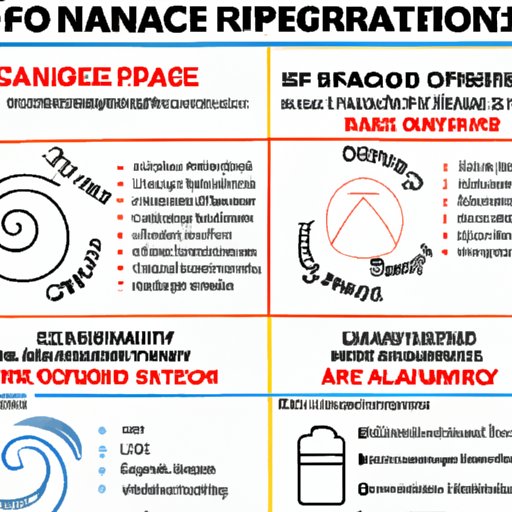Introduction
A hurricane is a type of tropical cyclone—a large rotating storm system that forms over warm ocean waters. Hurricanes are characterized by strong winds, heavy rainfall, and thunderstorms. These storms can be incredibly destructive, causing billions of dollars in property damage and loss of life each year.
In this article, we will explore the science behind hurricanes, the anatomy of these storms, the causes of their formation, their destructive force, and how to prepare for hurricane season. Let’s dive in!

Explanation of the Science Behind Hurricanes
Hurricanes begin as clusters of thunderstorms that form over warm ocean waters. These storms move toward the west due to the Earth’s rotation, and they draw energy from the warm water below. As the storms rotate faster and faster, they can become organized into a single, powerful system known as a hurricane.
There are three types of storms that can develop into hurricanes: tropical depressions, tropical storms, and hurricanes. A tropical depression is a cluster of thunderstorms with wind speeds of less than 39 miles per hour (mph). A tropical storm has wind speeds between 39 and 73 mph. Finally, a hurricane is a tropical cyclone with wind speeds greater than 73 mph.
In order for a hurricane to form, certain atmospheric conditions must be present. The air must be warm and moist, the atmospheric pressure must be low, and there must be an area of weak wind shear. Wind shear is a measure of how much the wind changes direction and speed as you move higher in the atmosphere.
Anatomy of a Hurricane and Its Destructive Force
Hurricanes have many different components, but the most destructive aspects of these storms are the high winds and storm surge. Wind speeds in a hurricane can range from 74 to more than 150 mph, and the strongest winds tend to be located at the center of the storm, or the eye.
Storm surge is an abnormal rise in sea level caused by the strong winds associated with a hurricane. This surge can cause flooding along the coast and can be deadly if people are not prepared. Storm surges can reach heights of 20 feet or more.
The combination of high winds and storm surge can cause significant damage to buildings, homes, and infrastructure. Hurricanes can also trigger floods, mudslides, and other natural disasters. In addition, these storms can cause economic disruption, power outages, and loss of life.

Exploring the Causes of Hurricanes
The exact causes of hurricanes are still being studied, but scientists believe that climate change, ocean temperatures, and El Niño/La Niña are all factors in hurricane formation. Climate change is believed to be making hurricanes stronger and more frequent, while rising ocean temperatures provide more fuel for these storms.
El Niño and La Niña are two naturally occurring climate patterns that affect the strength of hurricanes. El Niño is a phenomenon in which the surface temperature of the Pacific Ocean rises significantly, while La Niña is a cooling of the Pacific Ocean surface. Both of these events can influence the development and intensity of hurricanes.

Examining Historical Hurricanes and Their Impact
Many of the most destructive hurricanes in history have occurred in recent years. For example, Hurricane Katrina in 2005 caused more than 1,800 deaths and over $100 billion in damage. Hurricane Sandy in 2012 caused more than 200 deaths and $75 billion in damage. And more recently, Hurricane Maria in 2017 caused more than 3,000 deaths and up to $90 billion in damage.
In addition to the loss of life, hurricanes can cause lasting financial and environmental consequences. For example, the destruction caused by Hurricane Katrina was so severe that parts of New Orleans remain uninhabitable to this day.
How to Prepare for Hurricane Season
With hurricane season approaching, it’s important to be prepared. There are several steps you can take to protect yourself and your family during a hurricane. First, create an emergency plan that outlines what to do if a hurricane strikes. Make sure everyone in your household knows the plan. Next, make sure you have adequate insurance coverage to protect your home and belongings.
Finally, create a disaster kit that includes essential items such as food, water, flashlights, batteries, first aid supplies, and cash. Having these items on hand can help you stay safe and comfortable in the event of a hurricane.
Conclusion
In conclusion, hurricanes are powerful storms that can cause significant destruction. We’ve explored the science behind these storms, their destructive force, the causes of their formation, and historical examples of their impact. We’ve also discussed how to prepare for hurricane season. By being informed and prepared, you can help protect yourself and your family in the event of a hurricane.
(Note: Is this article not meeting your expectations? Do you have knowledge or insights to share? Unlock new opportunities and expand your reach by joining our authors team. Click Registration to join us and share your expertise with our readers.)
